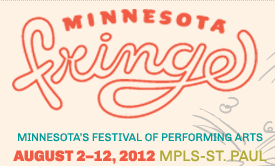PART VI: WHEN & WHERE? DEFINING A TRIGGER & CHOOSING A LOCATION
“Time and space are fragments of the infinite for the use of finite creatures. “
~Henri-Frederic Amiel, Swiss Philosopher, Poet and Critic
Followers of this series will be delighted to know that this penultimate entry is the most concise and straightforward.
 When?
When?
Attorneys often answer the question of when estate planning should be done with “yesterday.” This is because no one knows what can happen today or tomorrow. Unfortunately, none of us is able to accurately predict the exact moment when we will die or become incapacitated. The point being, estate planning must be made a priority and should not be put off.
Artist clients have an extra layer of consideration when it comes to timing. The artist client must decide at what point their body of work becomes something that s/he feels compelled to protect. I always ask my artist clients one question to determine when we should start addressing their body of work in an estate plan.
- Do you care what happens with your body of work if you are no longer living?
As soon as an artist client answers the question in the affirmative, it is time to start the estate planning process or incorporate provisions into an existing estate plan. However, there are a few other triggers the artist client and attorney may need to consider even if the artist client answers the above question in the negative. For example:
Family members or other potential beneficiaries of an artist’s estate may serve as the catalyst for the estate planning process. After all, estate planning is created for loved ones. It is the proverbial gift that keeps on giving.
Prolific Artists
For some artists, their body of work can quickly accumulate. It is highly recommended that estate planning be pursued for prolific artists. Simply disposing of a large collection can be a major burden. It benefits an artist client of this type to help layout some guidelines for how the art should be handled.
Financial Success
As in most things when money is involved, it becomes important to formalize procedures to protect a financial future. Many artists want to know if there is a magic number that will trigger the need to engage in planning. A good rule of thumb I have used with artist clients is to encourage them to start planning as soon as they begin relying on their art for at least a quarter of their income.
 Where?
Where?
Estate planning laws are determined by each individual state. Choosing where to have an estate plan drawn up is usually a straightforward decision. It is almost always done in the state of residency. However, attorneys and artist clients may have a slightly more complicated decision to make.
For instance, if an artist owns homes all over the world and constantly travels, it may be harder to decide where the artist should have the estate plan drawn, especially since ancillary procedures in other states and even countries are likely. Further, when an artist lives in one state but his/her art is primarily promoted in another state, the artist client may need to consider which state’s law should be applied. This set of circumstances often occurs with artists in the film industry. An attorney will need to research which state’s laws would be most beneficial to the artist client’s interest. Often this will be New York or California, where art and entertainment workers make up a larger percentage of the population. Once an attorney determines which state’s laws should be applied, provisions can be added into the estate planning documents.
Part VII, the final in this series, will provide a brief review of our journey. It will also give some homework items that artists can start using immediately to prepare for a first meeting with an estate planning attorney.
Photo Credits:
Loring Park Art Festival 140+ artists in a variety of media including painting, photography, printmaking, handmade paper, wood, jewelry, sculpture, fiber, mixed media and glass. August 4 & 5, 2012.
Minnesota Bluegrass & Old-Time Musical Festival A four day music and camping festival that includes thirty hours of main stage concerts plus daytime instrument collaborations and nightly dances. August 9 – 12, 2012.
Minnesota Fringe Festival 165 shows in 15 venues. Minnesota’s festival of performing arts. August 2 – 12, 2012.
SUPPORT YOUR LOCAL ARTS COMMUNITY

